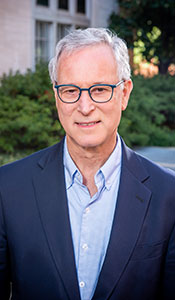In previous blogs, I’ve discussed to the fact that NF is a highly variable condition that can manifest differently among affected individuals. For example, two people within the same family can have very different symptoms of the condition. It’s an enigma as to why such a high degree of variability exists within NF. However, we do have a general understanding of three probable sources of variability that could provide a framework for determining, through further research, the extent to which complications of NF are predictable.
Sources of Variability Among People with NF
The first possible source of variability is the specific genetic mutation associated with NF in an individual. More than 3,000 mutations have been identified in the NF1 gene, and there a few examples in which a specific mutation can be correlated to certain NF symptoms. The UAB Medical Genomics Laboratory is engaged in ongoing efforts to determine correlations between physical manifestations of NF and specific mutations in the NF1 gene. While it is probable that certain mutations do predict specific NF symptoms, it’s also very likely that most mutations don’t predict the specific NF features or the course of the condition.
Another factor that likely plays a role in the variability of NF is an individual’s genetic background. Because individuals express genetic variants across the genome, it’s likely that there are other genes that can influence the manifestations of NF. Evidence for this phenomenon can be seen in mouse models. When the NF1 gene is introduced into genetically distinct strains of mice, the manifestations of NF can be very different. It seems likely that an individual’s distinct genetic background can help to determine the symptoms of NF that he or she experiences. It is difficult to design human studies to look for this phenomenon, however, due to the need to determine phenotypes (symptoms) and perform genetic sequencing on hundreds of patients, though efforts are underway to try to address this issue.
We are reasonably certain there is also a random nature to some of the physical manifestations of NF. Each individual is born with two copies of the NF1 gene, one inherited from each parent. In people with NF1, one copy of the NF1 gene is altered, or mutated, due to either inheriting the altered gene from a parent, a new mutation that occurs in the egg or sperm prior to conception, or from a mutation that occurs early in embryonic development. This represents the “first-hit” genetic mutation in NF1. In a neurofibroma or in most other tissues affected by NF1, the second copy of the NF1 gene is also altered due to a random genetic mutation that represents the “second-hit” mutation. This “second-hit” mutation seems to be a random event that leads to a specific complication, such as a neurofibroma. It is possible that there may be factors in a person’s genetic background that increase the likelihood of a “second-hit”mutation.
NF Chest Examination
Turning back to our discussion in the previous blog about what to expect during an NF exam, I’d like to briefly review what NF clinicians are focused on during a chest examination. Because people with NF have an increased risk of congenital heart defects, the chest exam includes listening for a specific type of heart murmur associated with pulmonic stenosis. This condition causes a narrowing of the pulmonary valve, interfering with blood flow from the heart to the lungs. However, the condition is not as common in NF as in other RAS pathway disorders.
While the lungs are not commonly affected in NF, some adults may experience emphysema-like changes thought to be related to NF. It is also possible for neurofibromas to develop in the chest, which can interfere with inflation of the lungs and with breathing. Occasionally, we can feel a nodular neurofibroma at the base of the neck or near the collarbone. Some people develop plexiform neurofibromas deep inside the chest, although we usually don’t see plexiform neurofibromas in the lungs or heart muscle. The only treatment for plexiform neurofibromas is surgical removal, which is reserved for cases in which important structures are affected.
Sometimes a bony deformation of the chest wall, called pectus excavatum, can occur in people with NF. The condition causes a depression in the breast bone and usually doesn’t result in problems or require treatment unless it interferes with lung inflation and breathing. In these cases, surgical treatment can be offered. Another condition, called pectus carinatum, causes the chest wall to bulge out, probably due to disproportionate rib cage growth. In most cases, the condition doesn’t require treatment.
In some people with NF, spinal tumors can become large enough that they can push on the lungs, which may require surgical removal of the tumors if breathing is affected. Also, people with NF are at increased for developing abnormal tissue growth inside of blood vessels, including major arteries in the heart and lungs. This condition weakens the vessel wall and leads to narrowing and possible rupture, which is a serious emergency. Sudden onset of severe chest or abdominal pain is a symptom that this condition may be present, indicating the need for diagnostic testing, though many other things can lead to pain other than vascular rupture.
NF Awareness Month
Finally, I’d like to remind everyone that May is NF Awareness Month. The Children’s Tumor Foundation has developed a number of activities to inform the public about NF [http://www.ctf.org/NFawareness], and there will be events here in Birmingham as well. Keep an eye on our Facebook page [https://www.facebook.com/uabnfprogram/], as well as the Neurofibromatosis Alabama page [https://www.facebook.com/Neurofibromatosis-Alabama-Childrens-Tumor-Foundation-203255213153983/] for further details.
Director's Blog
Sources of Variability in NF and What to Expect During an NF Chest Examination
- Details
- Written by: Bruce Korf
